As an Amazon Associate I earn from qualifying purchases. This website also participates in other affiliate programs and may earn commissions if you shop through the links used on this website.
(This article was originally published on July 5, 2022 and was last updated on September 6, 2022)
Lemon basil is a way for temperate climate growers, who cannot necessarily grow citrus fruits where they live, to incorporate that zingy, lemon zest into their homegrown diet alongside the usual basil flavors.
As we all know, there are plenty of good reasons why basil is such a popular culinary herb. But common or sweet basil is not the only option…there are a ton of basil varieties out there, including zesty lemon basil!
So why not explore growing lemon basil where you live?
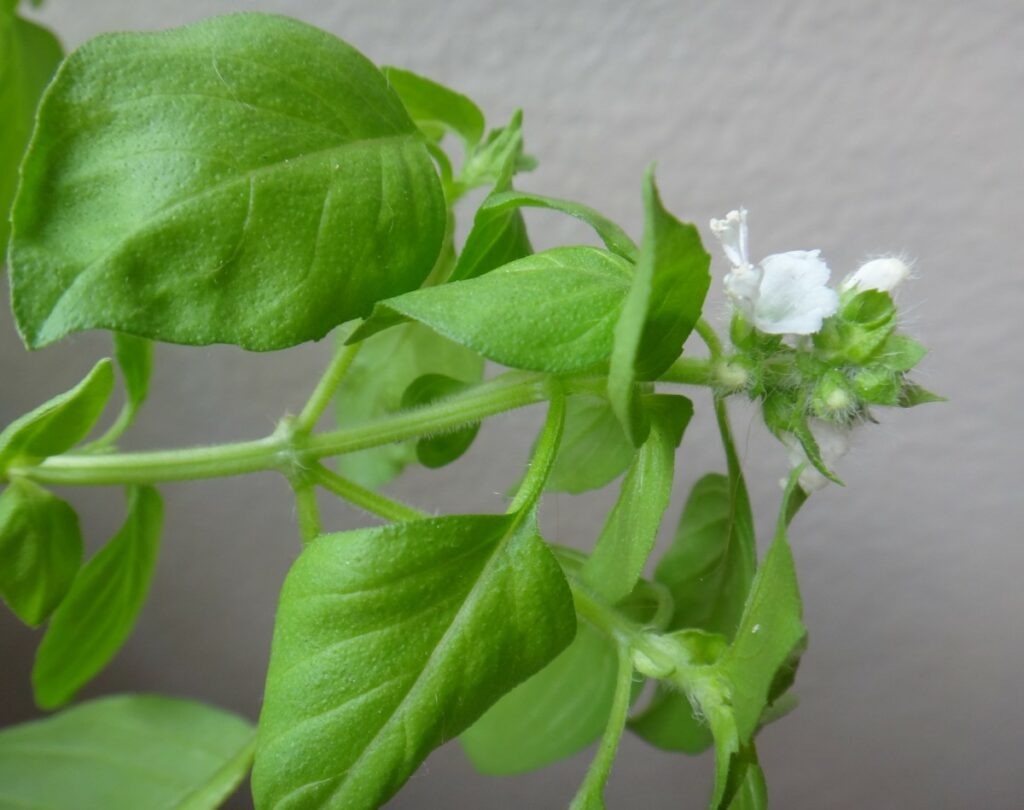
What is Lemon Basil?
Combining the fresh flavor of basil with lemon in recipes is a popular combination.
But it is possible to enjoy a lemony zing and fragrance from the plants themselves without adding the citrus fruit or lemon juice if you opt for a cultivar of lemon basil.
Ocimum citriodorum
When we talk about Lemon basil we are usually talking about a hybrid known by the Latin name Ocimum citriodorum.
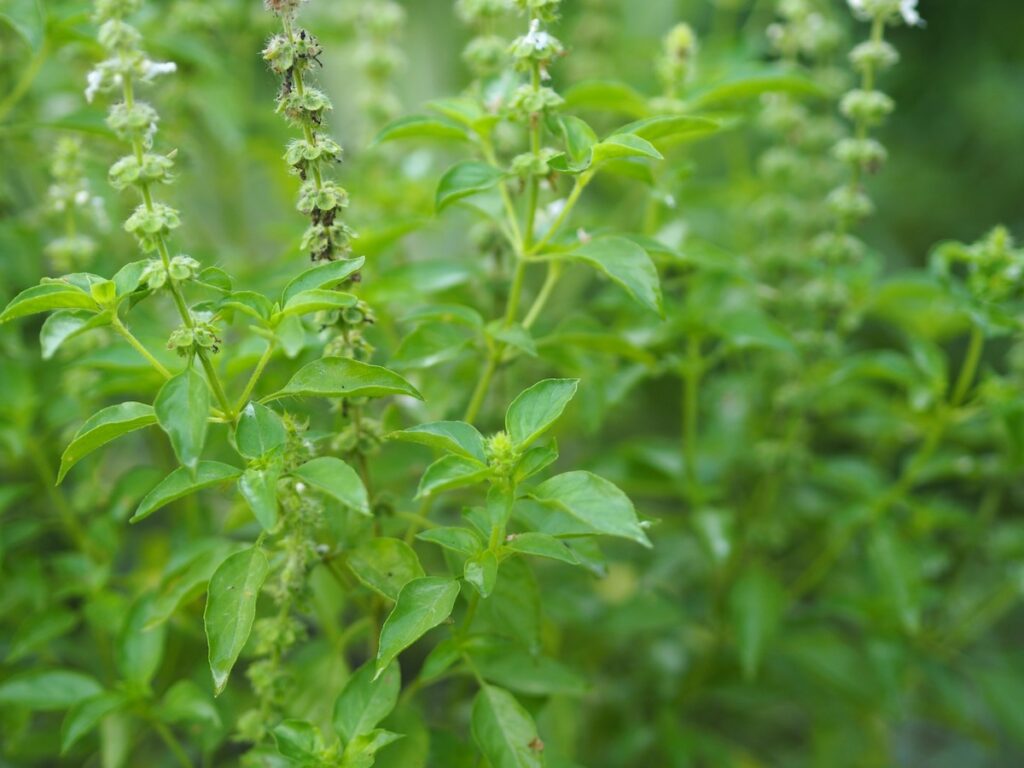
This is a basil hybrid cultivated for its intense lemony fragrance, and is also sometimes known as Ocimum africanum. It is commonly used in northeast African and south Asian cuisine, and you may have heard it called Thai lemon basil.
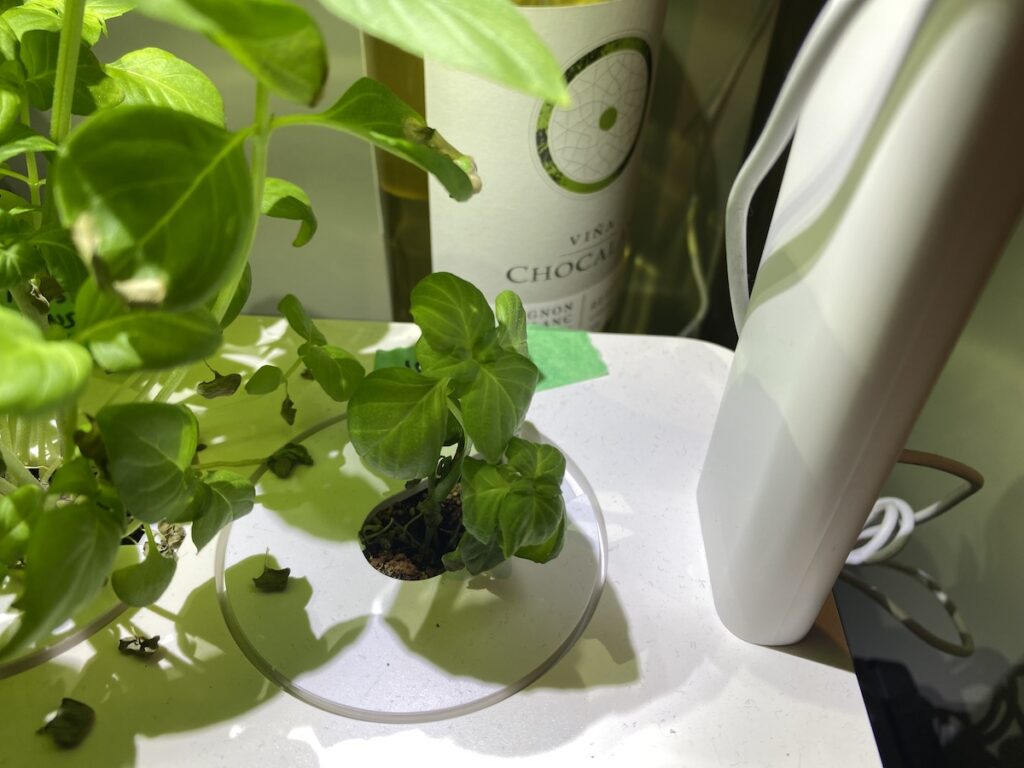
Similar to Purple Ruffles basil is a cross, lemon basil is a plant created by humans through the cross-breeding of Ocimum basilicum (common basil) and Ocimum americanum (American basil).
Ocimum basilicum var. citriodora (Mrs Burns Lemon Basil)
There are also heirloom cultivars of sweet or common basil which have a lemony flavor and fragrance. Since these are also referred to commonly as ‘lemon basil’ it is easy to be confused between the two.
One legendary type of heirloom lemony basil is also known as ‘Mrs Burns’ Lemon Basil’ since the varietal was introduced by organic gardener Janet Burns from New Mexico in 1939. She got the seeds from a neighbor who had been growing them since the 1920s – a bit of a fun and quirky story within the history of basil!
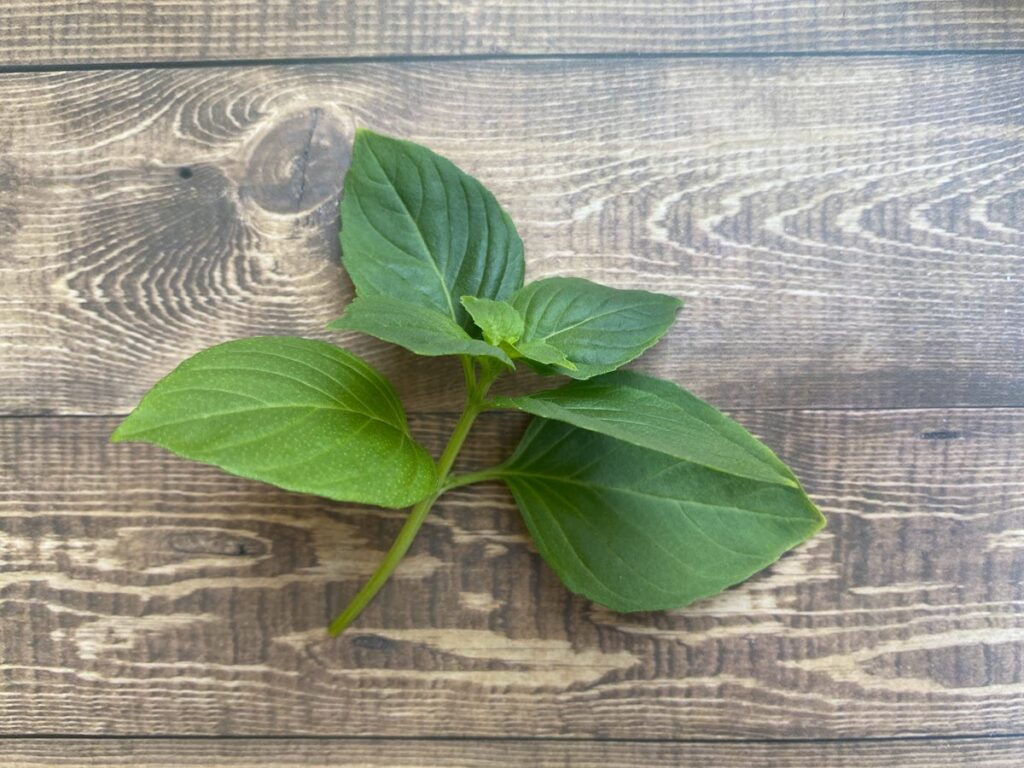
Though the lemon characteristics of this plant are very similar to the hybrid most commonly referred to as lemon basil, it is a cultivar of Ocimum basilicum rather than a hybrid plant.
This option is more intensely lemony than the above. In terms of looks, it also has larger leaves, and can be more robust and reliable for temperate climate gardeners.
So it could also be a good option to consider if you are looking for lemon basil leaves that incorporates the flavor and scent of the citrus fruit.
Which Lemon Basil Should You Choose for Fresh Lemon Basil Leaves at Home?
If you love Thai or other South East Asian cuisines, then the best way to replicate your favorite dishes is to grow the first option above. The hybrid lemon basil is the type that will allow you to cook authentic meals using your favorite recipes from these regions.
However, I have to admit that I have a partiality to the second option, which is so remarkably easy to grow for gardeners in temperate climate gardens. I love the resilience of this option, which can self-seed easily in many gardens and which will also do reasonably well in containers, with (in our experience) less incidences of black spots, white spots, brown patches, holes, yellowing of the leaves, and other problems common to basil).
I also personally prefer the more intense lemon flavor of this heirloom lemon basil. Mrs Burns lemon basil lends it to a wide range of uses in the kitchen, and is such a tasty addition.
Of all the lemony basils out there, this seems to be the most lemony of all. For this reason, it is a top choice for many chefs and keen cooks growing unique fresh herbs. It’s also the type I chose to grow in my garden, and a welcome addition to my cooking when I want fresh basil.
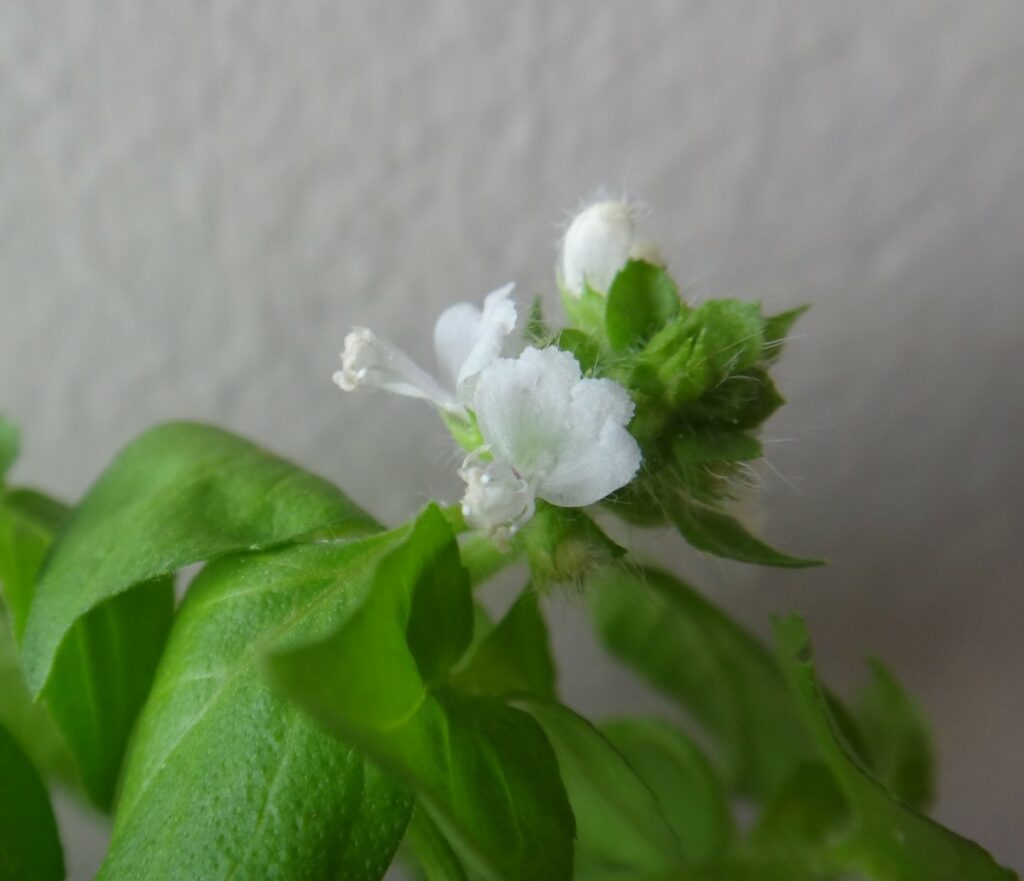
How to Grow Lemon Basil
Whether you wish to grow the hybrid lemon basil or the heirloom ‘Mrs Burns’ Lemon basil, the process involved remains largely the same. While both can be perennial in warmer climes, we typically grow them as annuals in temperate climates, with the growing season lasting from late spring to late summer or early autumn.
Where to Grow Lemon Basil
If you would like to grow one of the types of lemon basil mentioned above, then one of the first decisions that you will have to make is where exactly you will grow it.
Lemon basil, like most other basils, can be grown:
- In containers on a sunny windowsill or other bright, light location indoors.
- In containers on a sunny patio, or other outdoor location with at least 6 hrs of sunlight per day. (Where it is warm enough during the summer months. These basils are tender and can cope with temperatures down to around 5-10 degrees C. but no lower.)
- In a dedicated outdoors herb garden, in full sun and warm soil, in a sheltered spot, in a moist yet well draining soil. (Again, where summer conditions permit.)
- As a companion plant in a vegetable garden – either outdoors or in an undercover growing area such as a greenhouse or polytunnel. (Basils of all kinds are a particularly good companion for tomatoes, peppers, and eggplants, for example.)
- In mixed beds or borders alongside annual flowers.
Sowing Lemon Basil
Both lemon basil and Mrs Burns’ Lemon can be grown quite easily from seed, and Mrs Burns is a fast germinator, similar to Cinnamon Basil. Typically, temperate climate gardeners will sow these seeds around 6 weeks before the last frost date in their areas, as basil doesn’t do well growing in winter.
Plant seeds in seed trays or small pots, around 6mm deep, at 21 degrees C. for the best germination rates. The seeds should germinate within 1-2 weeks.
Once the seedlings have developed 3-4 sets of true leaves, these can be hardened off and transplanted to the garden, or potted up into their own, suitably sized containers. Whereas dwarf basils such as Greek basil due exceptionally well in containers, full sized basil cultivars (such as lemon, Red Rubin, African Blue, and especially larger varieties like the lettuce leaf basils), really need enough space in their pots and in the garden.
Planting Lemon Basil
When planting lemon basil of either type in pots or other containers, make sure that you choose a growing medium that provides the moist yet free-draining conditions that basils need. Make sure there is adequate drainage at the base of any container that you choose. Basil will wilt if it doesn’t get enough water, but too much water and soppy soil isn’t what it likes either.
I usually pot up my basils into a homemade potting mix of 1/3 loam, 1/3 homemade compost, and 1/3 leaf mold. Though any peat-free, multi-purpose compost or potting mix should work fine.
When sowing outside in the ground or in raised beds, plant out seedlings at an approximate spacing of around 10-20cm between plants, and if sowing multiple rows, keep these 45 cm apart.
Caring For Lemon Basil
Water when the top of the soil or growing medium is dry, remembering that more watering will generally be required when growing in pots.
However, Mrs Burns’ Lemon, as a plant from New Mexico, can be surprisingly drought and heat tolerant – so could be a better choice than other basils where summer aridity can be a problem.
Try to water early in the day where possible, and water the soil and not the leaves to discourage the growth of mildews and other fungal issues, and to make sure the water reaches the roots where it is needed.
- Mulch around the plants upon planting with organic matter to retain moisture, add slow-release fertility, and suppress weed growth.
- Plants growing in reasonably fertile soil will not typically require additional fertilization. But when growing in containers, it can be a good idea to feed your lemon basil plants with a nitrogen-rich organic liquid plant feed (like nettle tea, for example, or compost tea) every couple of weeks through the summer.
- Look out for slugs and snails which can decimate young lemon basil plants. Attract natural predators to your garden to keep their numbers down. And add physical barriers where necessary.
Harvesting Lemon Basil
Harvesting lemon basil is not just about obtaining a yield, it is also part of its care.
Harvest little and often as soon as the plants become established. Nipping off the tips through harvesting will encourage healthier and bushier plants.
Prune early in the morning when essential oils are higher – you’ll get a better flavor this way. In the morning, temperatures are also cooler, so there will be less stress on the plants during harvesting.
Do not allow the lemon basil plants to flower unless you wish to collect seeds from your plants or it’s the end of the growing season, and you don’t intend to move your basil inside for winter. Complete a full harvest just before flowering, by cutting the entire plant down to 10-15cm above ground level.
Handle the leaves carefully when harvesting so you do not bruise them. Don’t store the leaves in the fridge as damage will occur if they are kept below 10 degrees C.
How To Use Lemon Basil
Lemon basil (hybrid) is used in soups, stews, curries, and stir-fries. It is added to salads and eaten raw, and used as a garnish in various fish dishes. It is also used in chutneys and other preserves from southern Asia.
Mrs Burns’ lemon basil is commonly used in teas, infused kinds of vinegar, as well as salads (lettuce leaf basil is another good choice for salads) and soups. It goes well with chicken or fish dishes, and also excellent, with its intense lemon flavor, in baked goods and desserts. You could also toss fresh Mrs Burns leaves on top of a “white pizza” with a bechamel sauce or ricotta.
It’s great tossed in with other basils, and even stems, to make a salad dressing.
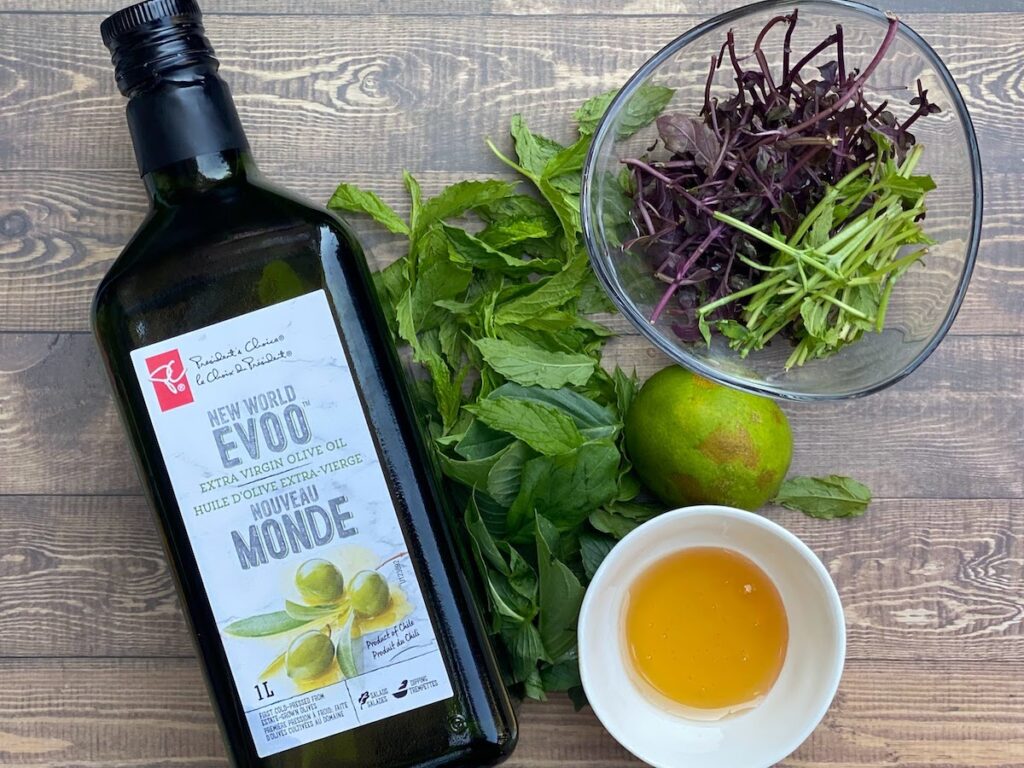
Where to Buy Lemon Basil Seeds/ Plants
If you can’t find a plant start or a mother plant to take a cutting from, some sources of organic hybrid Lemon Basil in North America include:
- https://heritageorganicseeds.com/product/basil-lemon/
- https://www.trueleafmarket.com/products/basil-seeds-lemon-organic
- https://sandiegoseedcompany.com/product/herbs/basil/organic-lemon-basil-seeds/
Some sources of Mrs Burns’ lemon basil for US gardeners include:
- https://www.johnnyseeds.com/herbs/basil/mrs.-burns-lemon-basil-seed-774.html?cgid=basil#start=1
- https://www.lazyoxfarm.com/product/basil-herb-plant-mrs-burns-lemon-organic/
- https://www.nativeseeds.org/collections/herbs/products/hb003
So why not consider growing one or even both of these lemon basils where you live?
Can you eat lemon basil leaves?
Yes, you can eat lemon basil leaves. It’s a delicious way to incorporate a zingy, lemon zest, and homegrown flavor into your cooking, especially if you can’t grow actual citrus trees in your climate. Lemon basil leaves taste great with fish, pasta, drinks, and grilled veggies.
What part of lemon basil is edible?
Lemon basil leaves and lemon basil flowers are edible for humans, and aren’t toxic or poisonous for many animals (including man’s best friend, cats, guinea pigs, rabbits, and even bearded dragons). That said, large quantities of basil may upset an animal’s digestive system, and there’s always a chance they have a basil allergy.
Is lemon basil the same as basil? Lemon basil vs basil.
Lemon basil is a hybrid plant, created by cross-breeding common basil (Ocimum basilicum) and lime basil/American basil (Ocimum americanum). Lemon basil is known by the Latin name Ocimum citriodorum or Ocimum africanum.
What’s the difference between Lemon basil vs Thai Basil
Whereas lemon basil is a hybrid cross-breed of common basil (Ocimum basilicum) and lime basil (Ocimum americanum), Thai basil (Ocimum basilicum var. thyrsifolia) is a variant of common basil (Ocimum basilicum), specifically bred for specific characteristics. Lemon basil has a zesty citrus flavor to it, whereas Thai basil has more of licorice or anise flavor to it.
Elizabeth is a garden designer, consultancy and writer passionate about growing herbs and other edibles in a sustainable way. She works on her own 1/3 acre garden, growing basil alongside her tomatoes in her polytunnel, and indoors alongside a range of other herbs and crops. She loves inspiring others to get growing and enjoying a home grown diet, wherever they live in the world.

